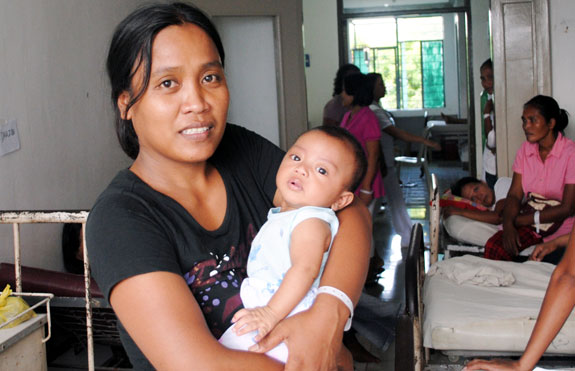
04 May International Day of the Midwife: Promoting Diversity to Reduce Disparities in Maternal Health
This post originally appeared on the Chemonics blog.
Only one-third of the poorest mothers deliver with a midwife compared to 90 percent of the richest in low- and middle-income countries. How can we help all women to have a safe childbirth experience? Rachel Deussom shares five recommendations.
A recent article highlighted the staggering disparities that persist in maternal and neonatal outcomes in America. The disparities are in part because of societal and racial bias within the health-care system. In New York, black women are four times more likely than white women to die in childbirth. Pre-eclampsia and eclampsia are life-threatening pregnancy-related conditions that are sixty percent more common in African American mothers. Black women are also more likely to experience adverse health outcomes from pre-eclampsia, despite it being considered fully preventable and treatable.
Diversity in the Health Workforce
While additional barriers to reduce racial disparities in maternal care persist, promoting diversity among midwives and other frontline health workers is an important step in the right direction. When a health-care professional shares a similar background as her patient, she is more likely to provide responsive, patient-centered care, including the diagnosis of life-threatening conditions.
“When a health-care professional shares a similar background as her patient, she is more likely to provide responsive, patient-centered care.”
The American College of Nurse-Midwives (ACNM) reported that less than 4 percent of certified nurse-midwives in the United States identified themselves as African American; approximately 1 percent were of Asian descent and less than 1 percent identified themselves as Hispanic. If more minorities became midwives and health professionals, they could better support minority mothers by providing more competent and respectful care. This is a key strategy to reducing racial inequities in health.
Another way the New York state government is trying to reduce racial disparities in maternal and neonatal health is by expanding Medicaid coverage through a pilot program that pays doulas to support black and low-income women. With familiarity and existing relationships with health workers and sitting solidly in the proverbial corner of the mother to support her emotionally and in decision-making processes, doulas also advocate for a mother’s best interests and amplify her voice. There is growing evidence that doula-assisted births have better maternal and neonatal outcomes. Midwives and doulas work seamlessly together, focusing on the natural and positive aspects of pregnancy and birth.
A Similar Picture Worldwide
Globally, the picture is unfortunately similar: Socioeconomically disadvantaged and marginalized women face greater challenges during pregnancy and birth. Only one-third of the poorest mothers (bottom quintile) deliver with the support of a midwife or another skilled health worker in low- and middle-income countries, compared to 90 percent of the richest mothers (top quintile), a striking income disparity.
As a public health professional and doula, I have listened to pregnant mothers from Cameroon to Zanzibar express their fears of visiting a health facility for delivery. Many of their fears related to how they would be treated by the health workers. A more representative and diverse midwifery workforce could help reduce these inequities. Further, community health workers can engage and empower mothers within the health system.
Five Recommendations for a More Diverse Health Workforce
Around the world, we need more midwives, birth assistants, and doulas that represent the communities they serve. How can we build a more representative midwifery workforce of the future?
- Compensate and value midwifery professionals, so it becomes a valued and viable career option for young people, including socioeconomic and ethnic minorities.
- Recruit health students from the communities that are the most underserved and train them in these communities.
- Help minorities overcome barriers to professional education in the health sector by providing scholarships or other financial aid, tutoring, and mentoring, from minority faculty if possible.
- Track the health workforce by race, ethnicity, age, gender, and socioeconomic variables and use data to advocate for greater diversity.
- Recognize and professionalize community-based health workers who support higher-quality, more patient-centered maternity care by amplifying marginalized voices.
This International Day of the Midwife celebrates midwives’ essential leadership role to improve reproductive, maternal, neonatal, and child health. The world needs more midwives from diverse backgrounds who are skilled, motivated, and empowered to deliver more equitable care.
Blog posts from the Chemonics blog represent the views of the authors and do not necessarily represent the views of Chemonics or HRH2030.





